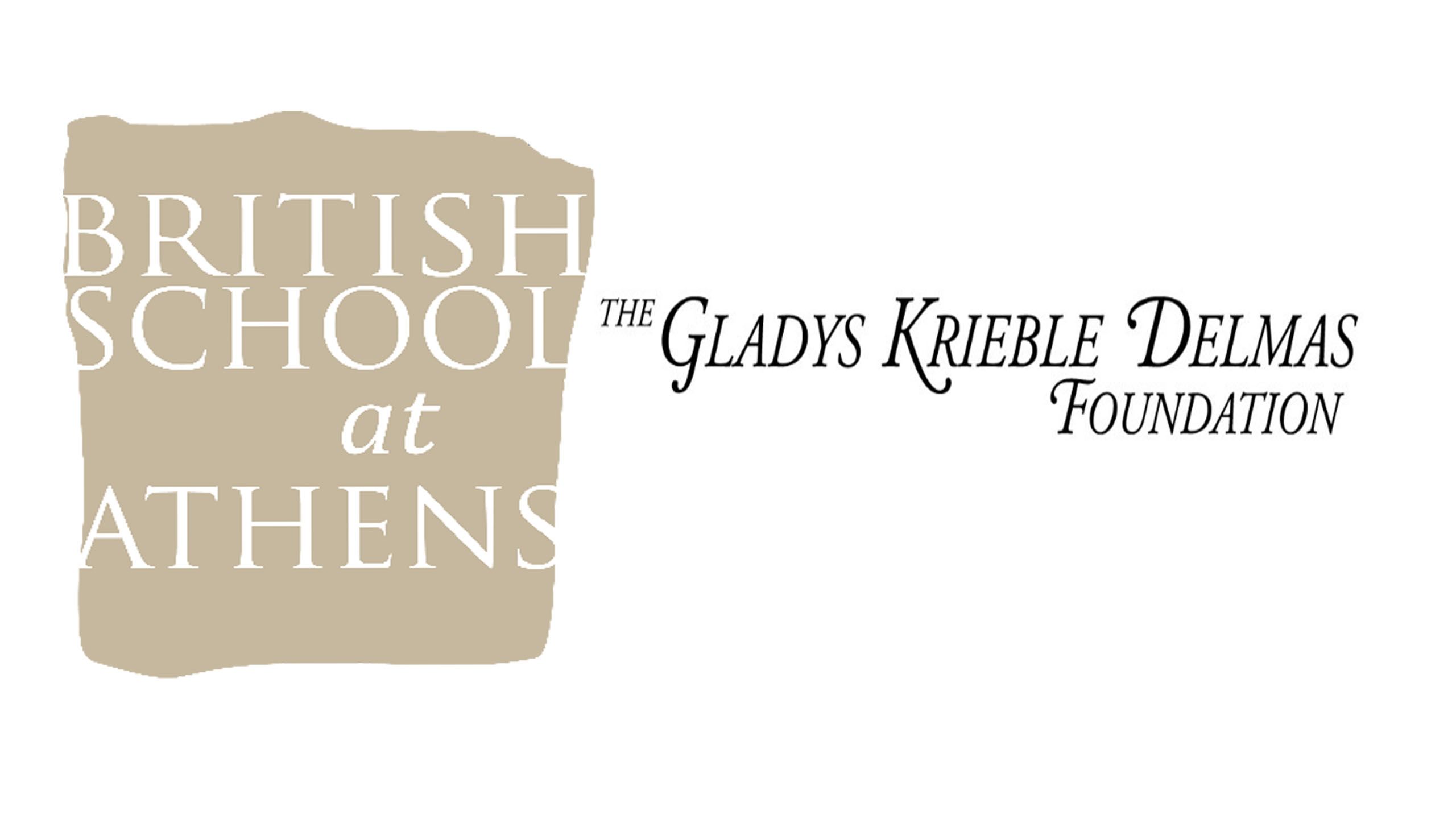Digital Mycenae
Explore the ancient Greek city of Mycenae in a newly released digital archive.
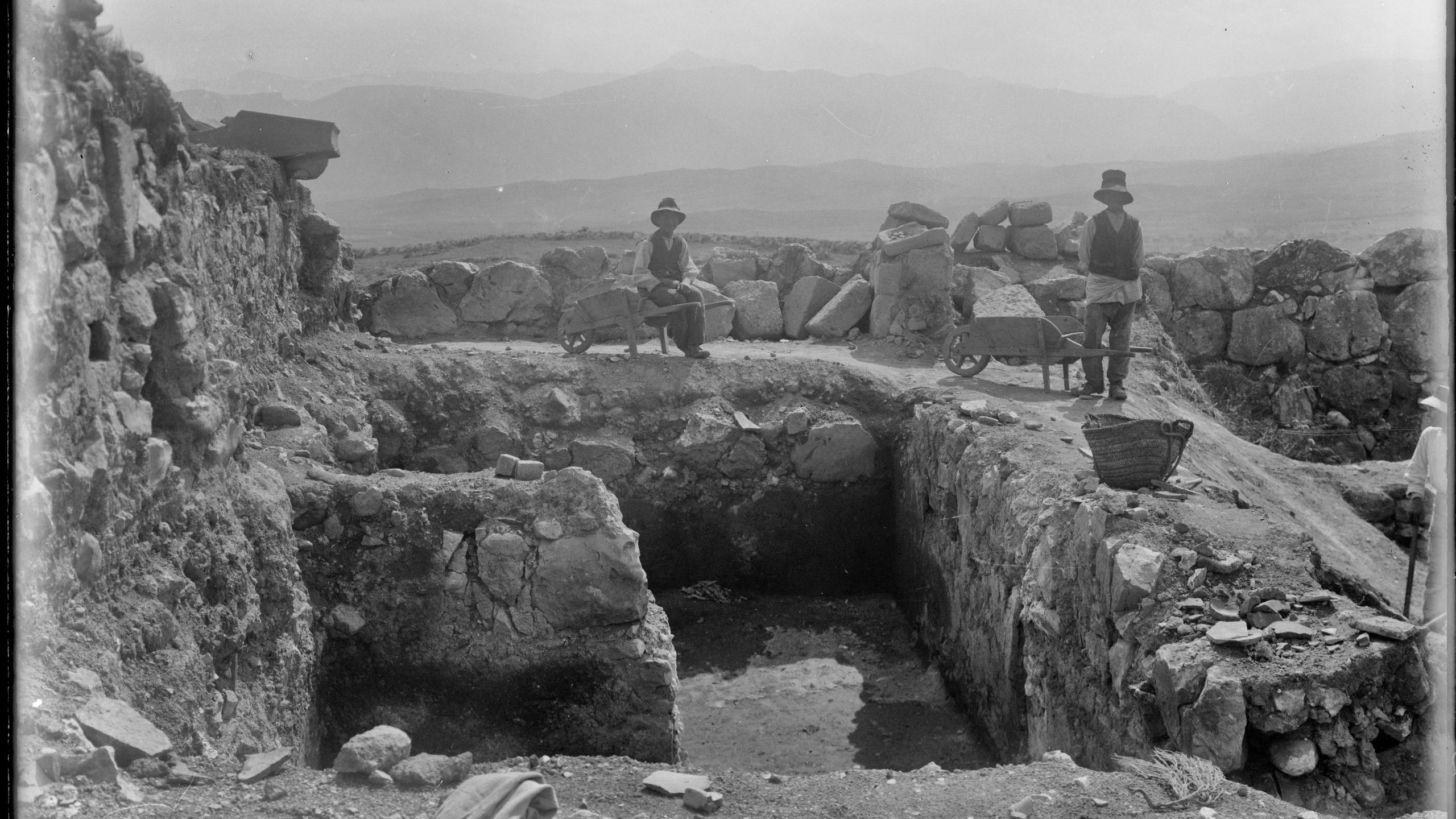
Archives relating to the British excavations of one of the most celebrated and famous cities of the ancient world, Mycenae in Greece, have been digitised on the Cambridge Digital Library to celebrate the centenary of the British archaeological dig.
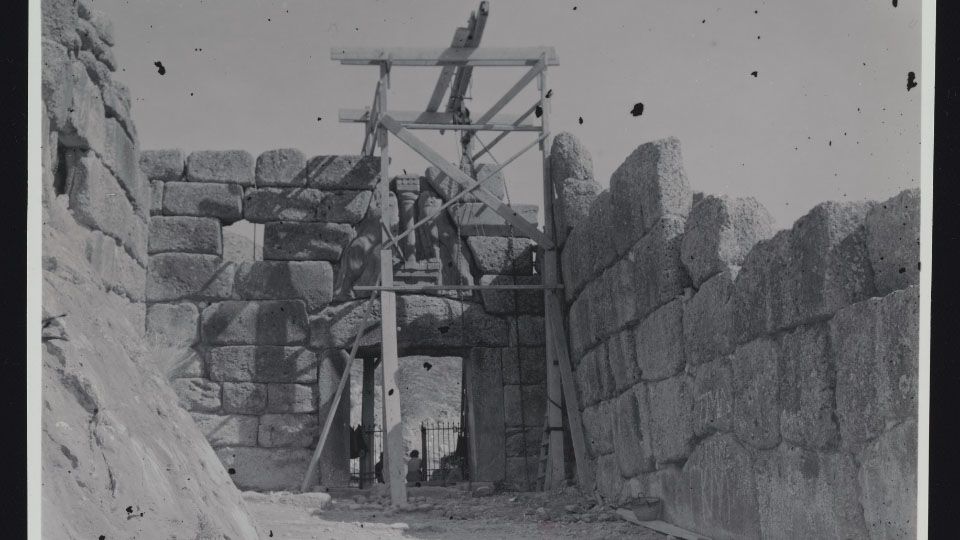
Repairs to the Lion Gate. ©Faculty of Classics Archives, University of Cambridge
Repairs to the Lion Gate. ©Faculty of Classics Archives, University of Cambridge
Since 2013, the Faculty of Classics has been home to a fascinating collection of photographs, architectural and illustrative drawings, correspondence and original archaeological notebooks, preserving important material from these pioneering excavations.
In 1999, UNESCO deemed Mycenae, located in the Peloponnese of modern Greece, to be a World Heritage site, highlighting the impact the site had and continues to have on European art and literature for more than three millennia.
Mycenae was a place of considerable power and a key site of the Mycenaean civilisation in the Late Bronze Age (c. 1600-1100 BCE). The stories associated with this site and its remains would go on to play a vital role in classical Greek culture as a source of inspiration in art and literature. Mycenae was part of a complex Bronze Age society with impressive architecture, and complex arts and crafts. Thanks to its control of key trade routes by both sea and land, the city flourished.
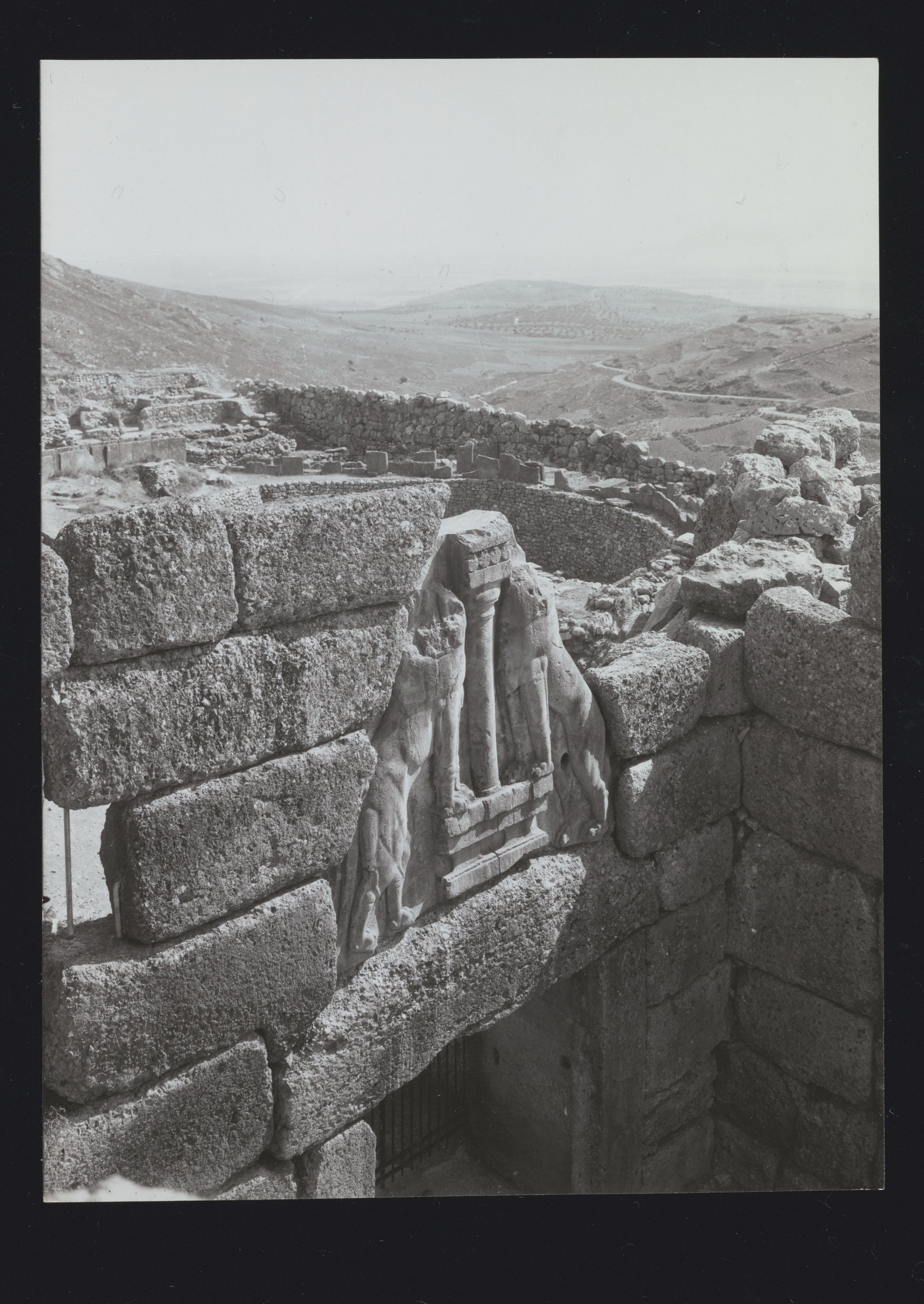
The Lion Gate, with view of Grave Circle A beyond, Mycenae, 1921, ©British School at Athens
The Lion Gate, with view of Grave Circle A beyond, Mycenae, 1921, ©British School at Athens
With an impressive collection of monumental tombs and richly-furnished burials, it is also a key site for investigating the rise of social complexity and state formation in the Aegean, ca. 1600-1200 BCE. Heavily fortified in its final centuries, Mycenae was an administrative centre in the 14th and 13th centuries BCE.
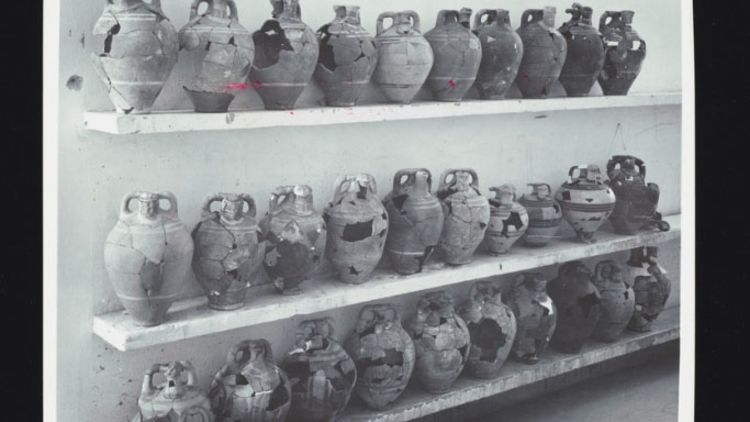
"These fascinating materials are an incredibly valuable addition to the Digital Library, bringing together a major Cambridge collection with collections from the British School at Athens to form a resource which will be of interest to researchers, educators and the general public."
Huw Jones, Head of Digital Library Unit, Cambridge University Library
To celebrate the anniversary of the excavations of the renowned Bronze Age site, the Faculty of Classics has collaborated with the British School at Athens (BSA) and the Cambridge Digital Library, to digitise the records of Alan J.B. Wace, former Professor of Classical Archaeology in the Faculty of Classics and Director of the British School at Athens, who led a number of excavations from 1920 until his death in 1957.
Wace was one of the leading archaeologists of early Greece in the 20th century and spent over a decade travelling and researching new sites while he was student at the BSA. Above all, he is today remembered for his outstanding work at Mycenae and in Mycenaean archaeology.
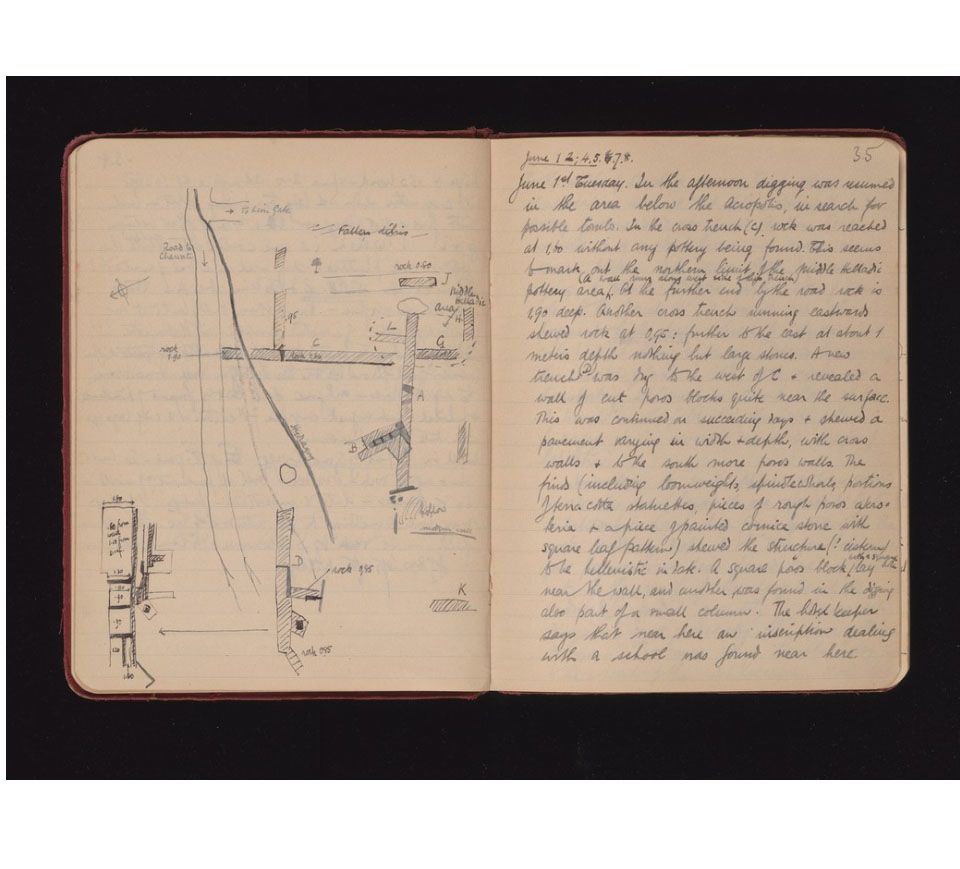
Director's Day Book for 1920-1921 compiled by A.J.B. Wace. Entry for 1 June 1920 recounting progress of excavation work. ©Faculty of Classics Archives, University of Cambridge
Director's Day Book for 1920-1921 compiled by A.J.B. Wace. Entry for 1 June 1920 recounting progress of excavation work. ©Faculty of Classics Archives, University of Cambridge
Wace and his team’s excavations at Mycenae began on 23 April 1920. Their work helped to clarify significantly the chronology of Mycenae’s monuments, especially the sequence of use of the various areas outside and within the fortification walls – an issue that had remained poorly understood ever since the spectacular discoveries made there in the 1870s by Heinrich Schliemann and Panagiotis Stamatakis.
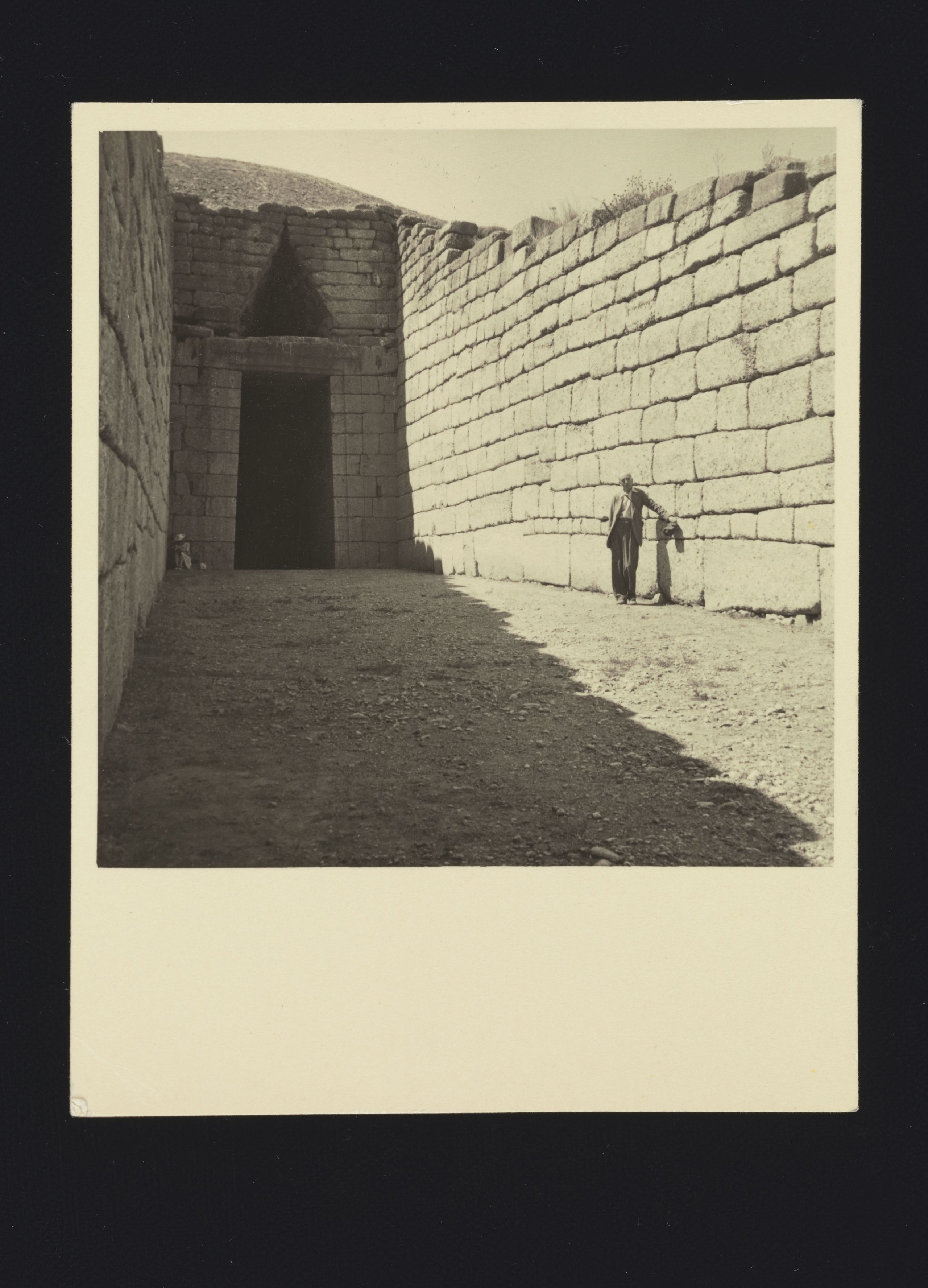
A.J.B. Wace standing in the passageway of the Treasury of Atreus, Mycenae, 9th September 1940, ©Faculty of Classics Archives, University of Cambridge
A.J.B. Wace standing in the passageway of the Treasury of Atreus, Mycenae, 9th September 1940, ©Faculty of Classics Archives, University of Cambridge
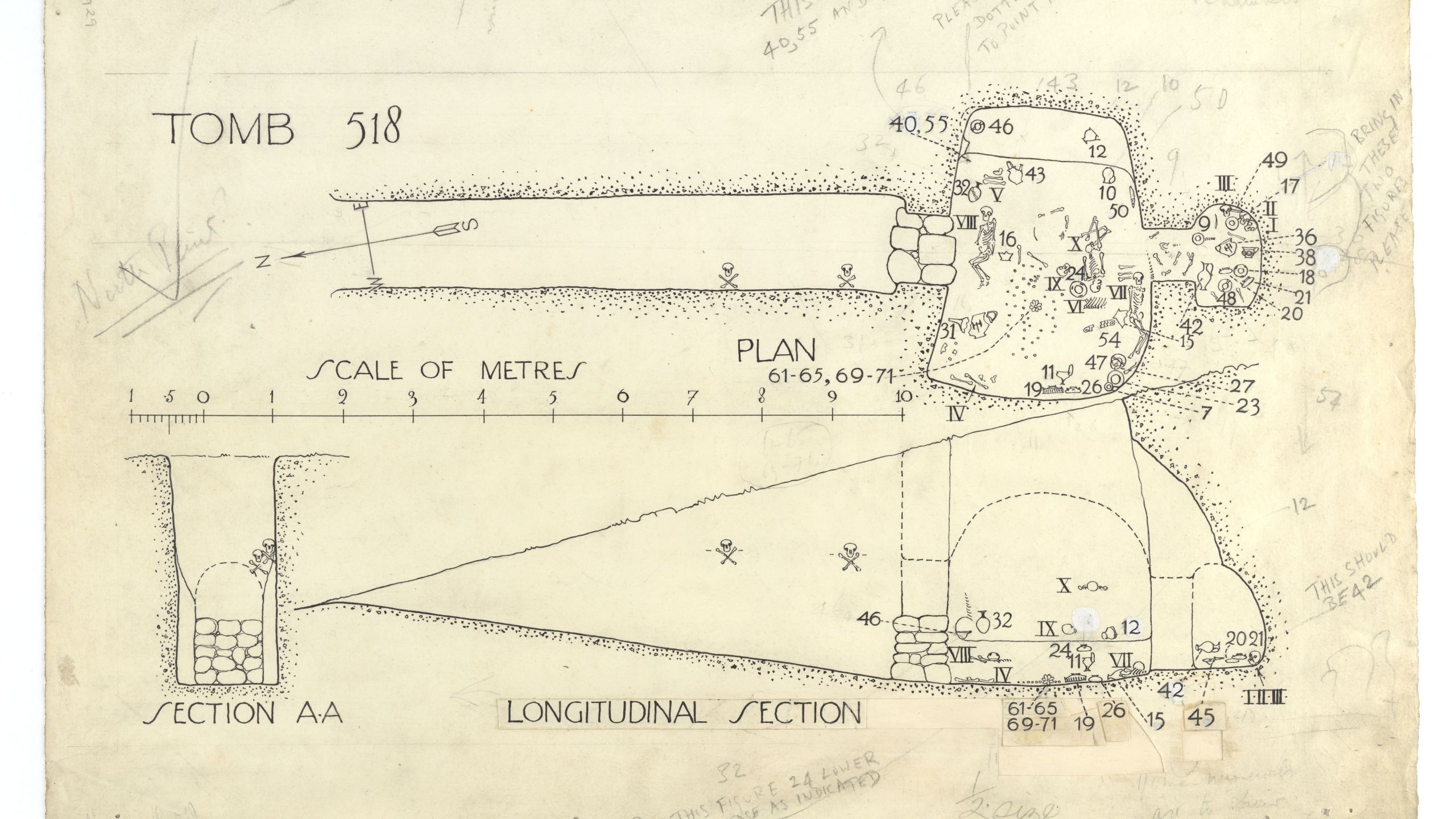
Plan and section drawing of Chamber Tomb 518, Mycenae, unsigned, 1922-1923, MCNE-2-2-01-10, ©British School at Athens
Plan and section drawing of Chamber Tomb 518, Mycenae, unsigned, 1922-1923, MCNE-2-2-01-10, ©British School at Athens
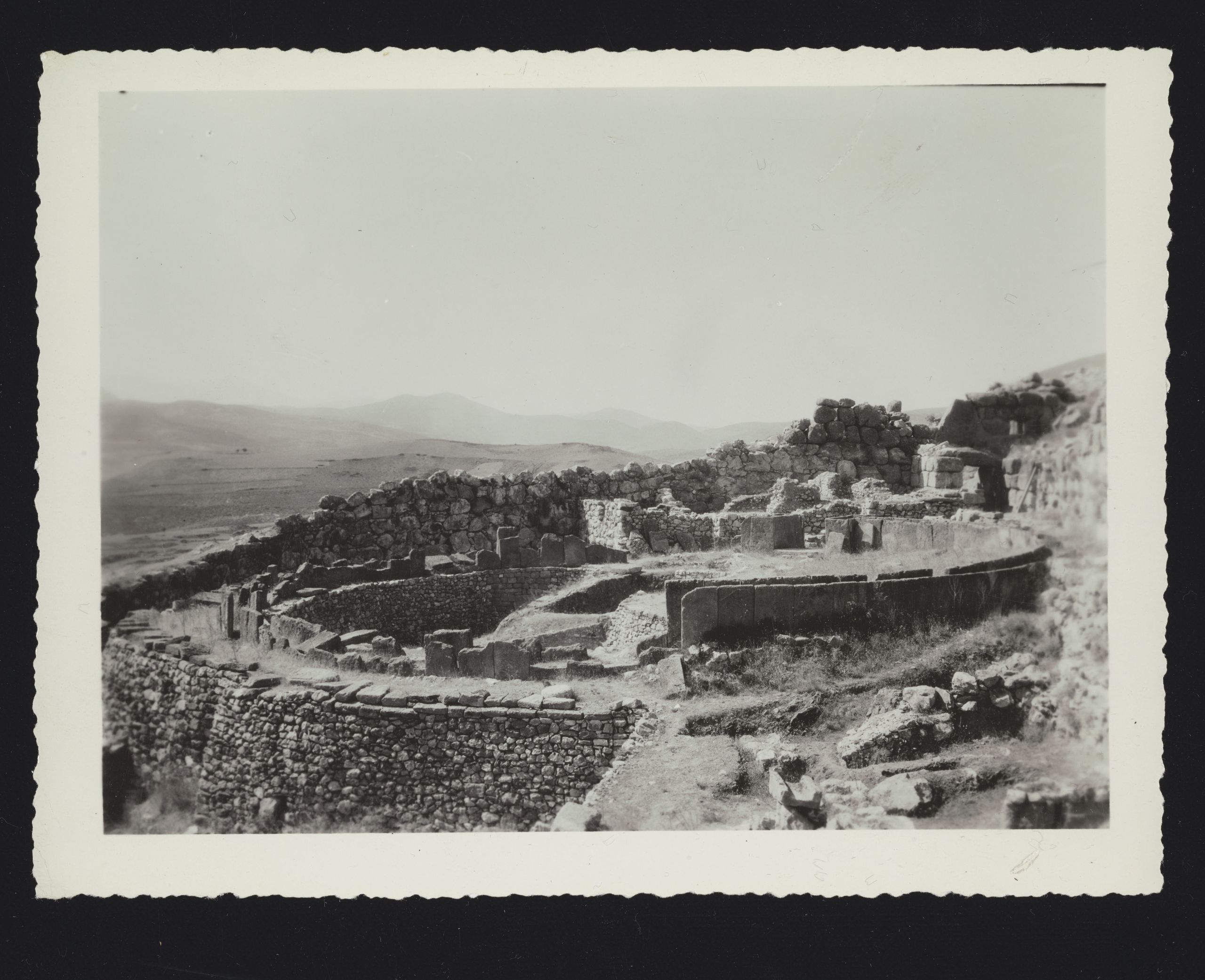
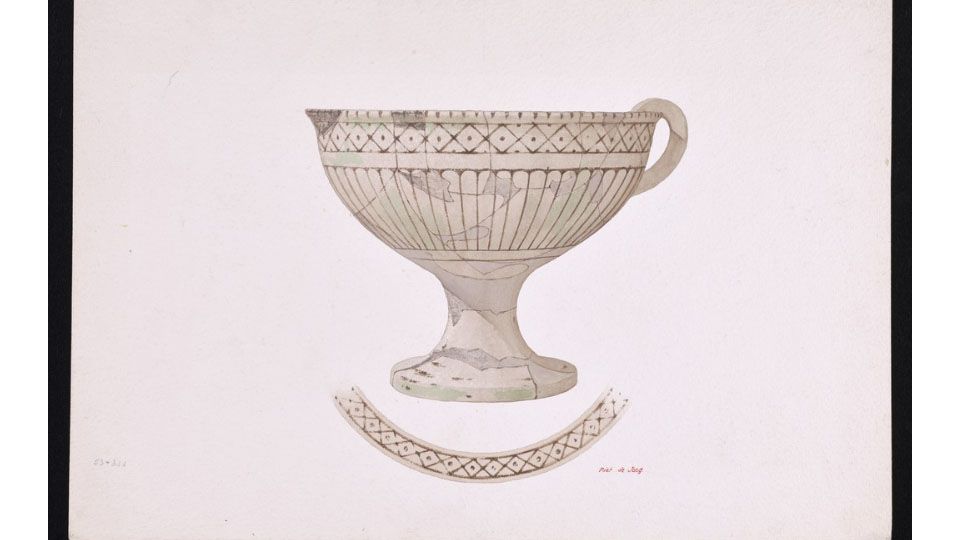
Following the work of and with permission from Christos Tsountas, the Greek archaeologist who investigated a large number of tombs and parts of the citadel from 1886 to 1910, Wace and his team cleared the palace complex and several Mycenaean buildings. They revealed evidence for different phases of occupation. They also carefully excavated a series of rock-cut chamber tombs adding new information to the study of burial practices.
This work showed that Grave Circle A – excavated in 1876 by Heinrich Schliemann and Panagiotis Stamatakis – was in fact part of a much larger cemetery and the circle was of a much later date than the tombs within it. The discoveries made by Wace and his team during the excavations of the 1920s, were fundamental in helping to establish the basis on which the chronology of Mycenaean civilisation was founded.
Wace returned to Mycenae again in 1939 and in the 1950s to further explore Mycenae’s prehistoric cemetery as well as bringing to light important structures both inside and outside the citadel.
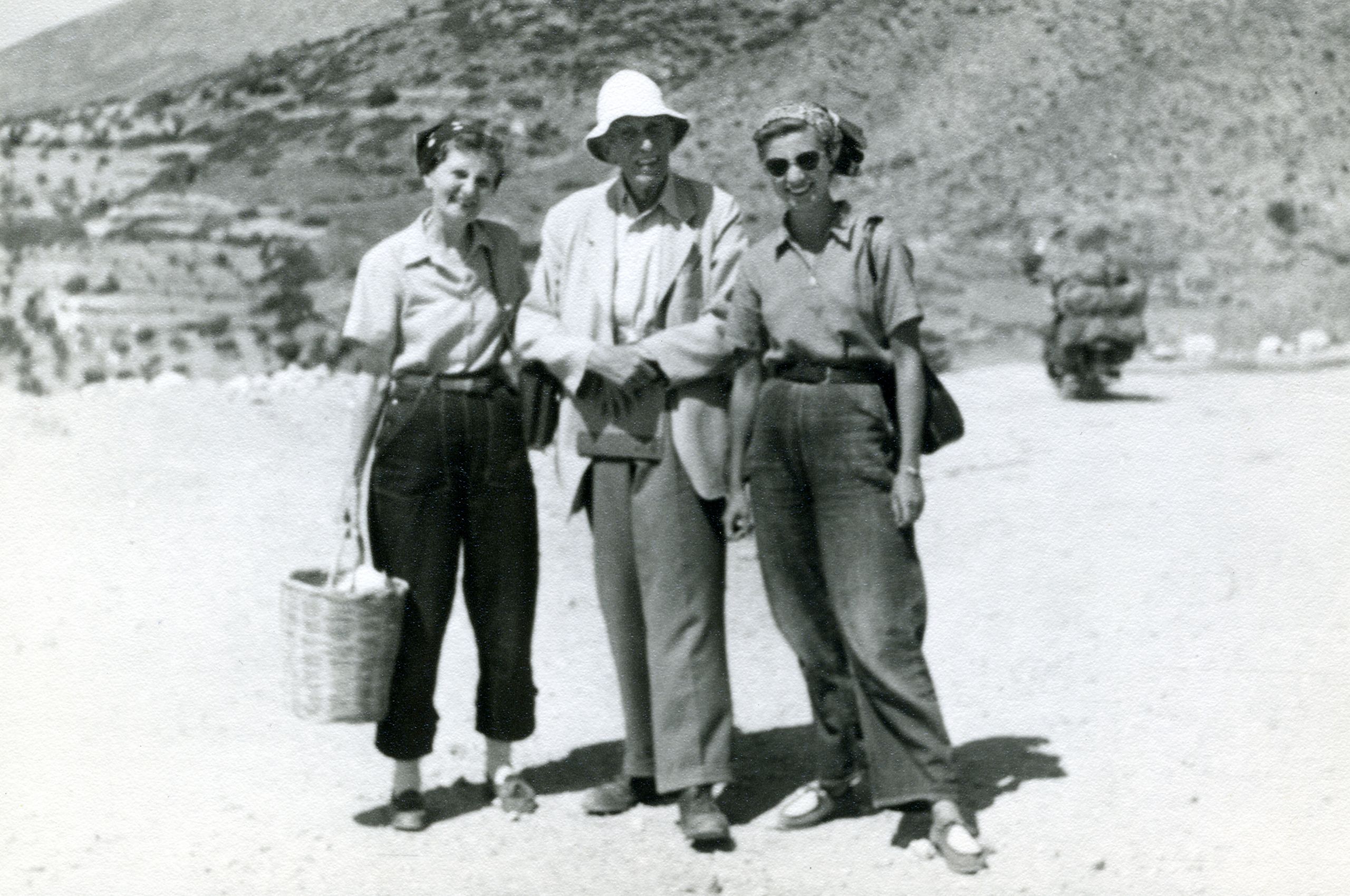
Alan, Helen and Lisa Wace, Mycenae, 1953, ©Faculty of Classics Archives, University of Cambridge
Alan, Helen and Lisa Wace, Mycenae, 1953, ©Faculty of Classics Archives, University of Cambridge
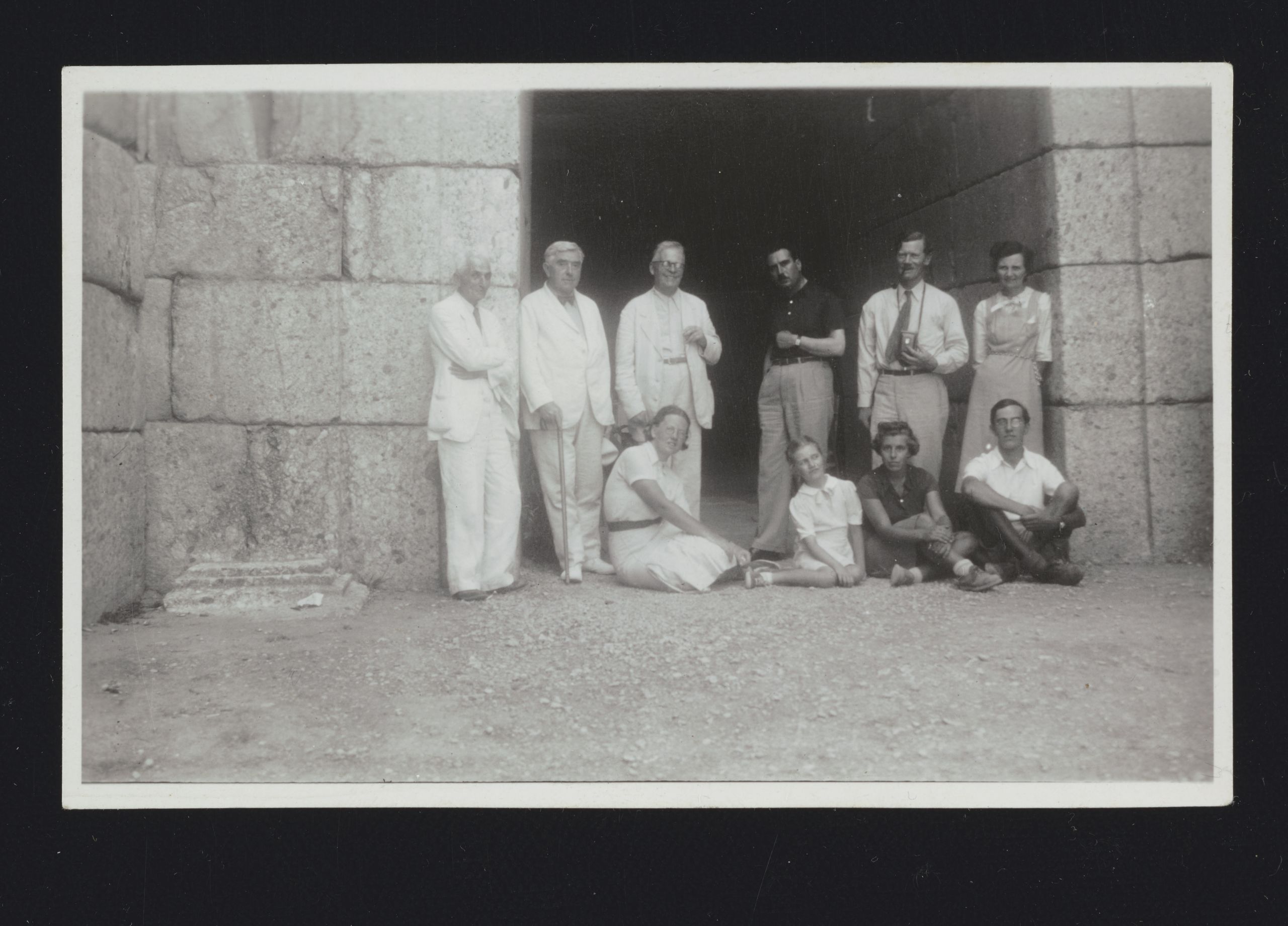
“A century on from Wace’s historic first excavation season at Mycenae, it is immensely gratifying to see 21st-century technology deployed to unify for a worldwide audience these two sets of primary data from those excavations. The BSA shares Cambridge’s pride and enthusiasm in marking this centenary in a way that reaches far beyond the relatively small world of specialists in Aegean archaeology. Congratulations to all those involved!”
Professor John Bennet, Director of the British School at Athens
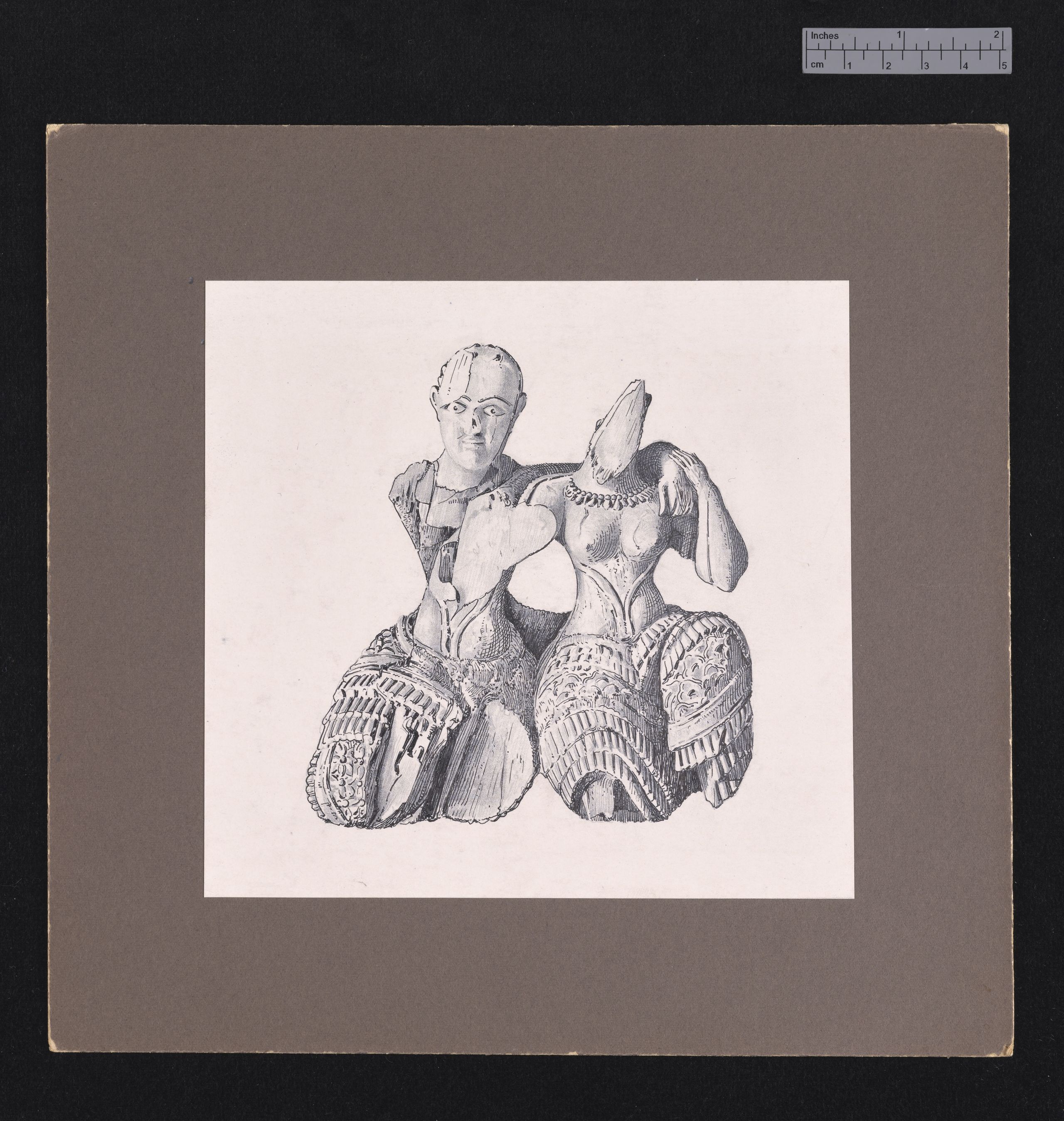
Drawing of ivory figural trio (ca. 1450 BCE), from the Prinaria, Archaic Temple north terrace, Mycenae, by E. Gilliéron fils, ©British School at Athens
Drawing of ivory figural trio (ca. 1450 BCE), from the Prinaria, Archaic Temple north terrace, Mycenae, by E. Gilliéron fils, ©British School at Athens
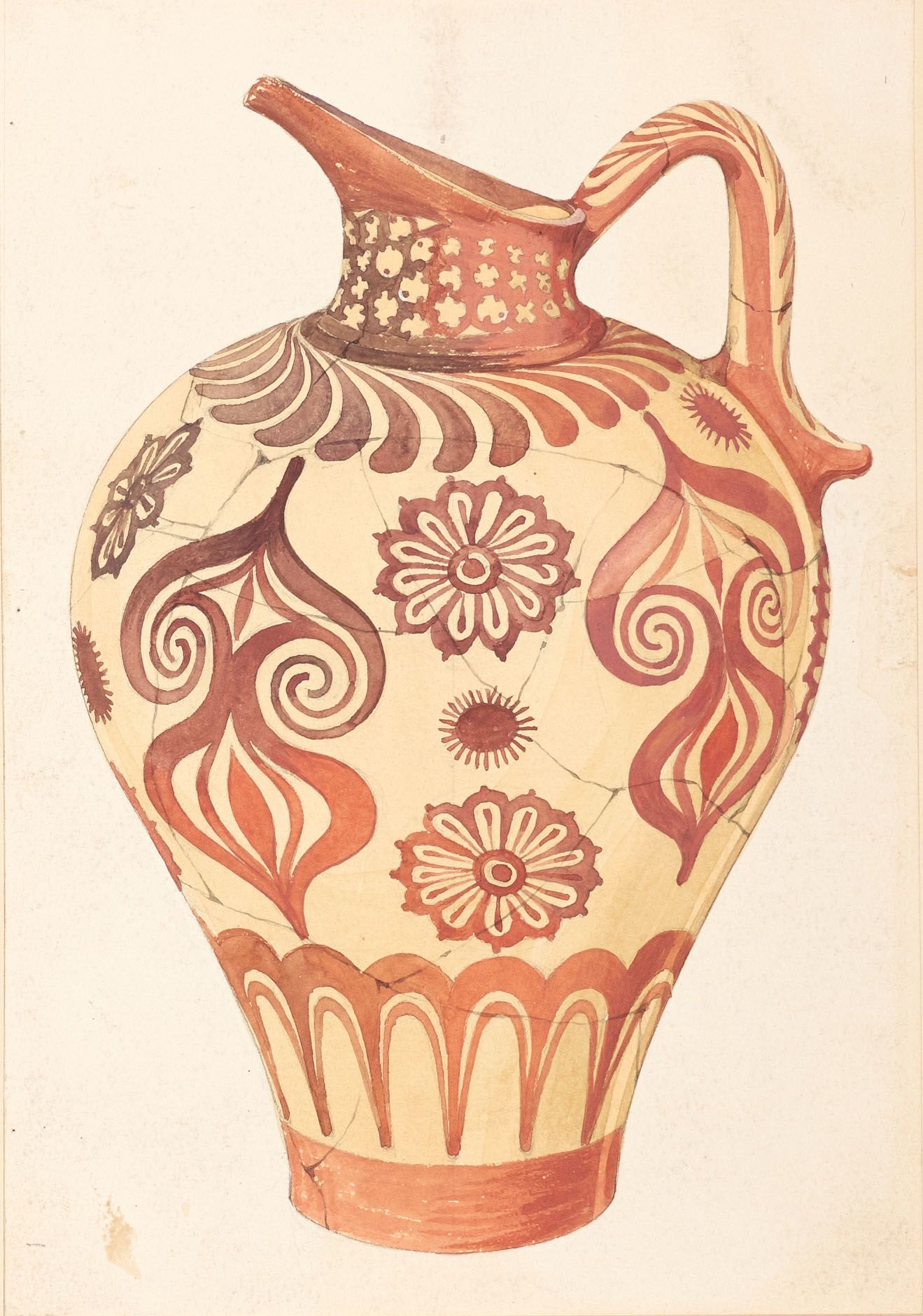
Drawing of a clay vase from Chamber Tomb 518, Mycenae, unsigned, ©British School at Athens
Drawing of a clay vase from Chamber Tomb 518, Mycenae, unsigned, ©British School at Athens
During excavation of the Archaic Temple on the citadel in 1939, an ivory Mycenaean trio of figures was discovered below its foundations, an extraordinary piece of ancient craftsmanship.
The discovery of the first Linear B tablets in Mycenae in 1952, proved that Mycenaean society was literate and further complemented similar earlier discoveries by the famous American archaeologist Carl Blegen at Pylos in the Southwest Peloponnese.
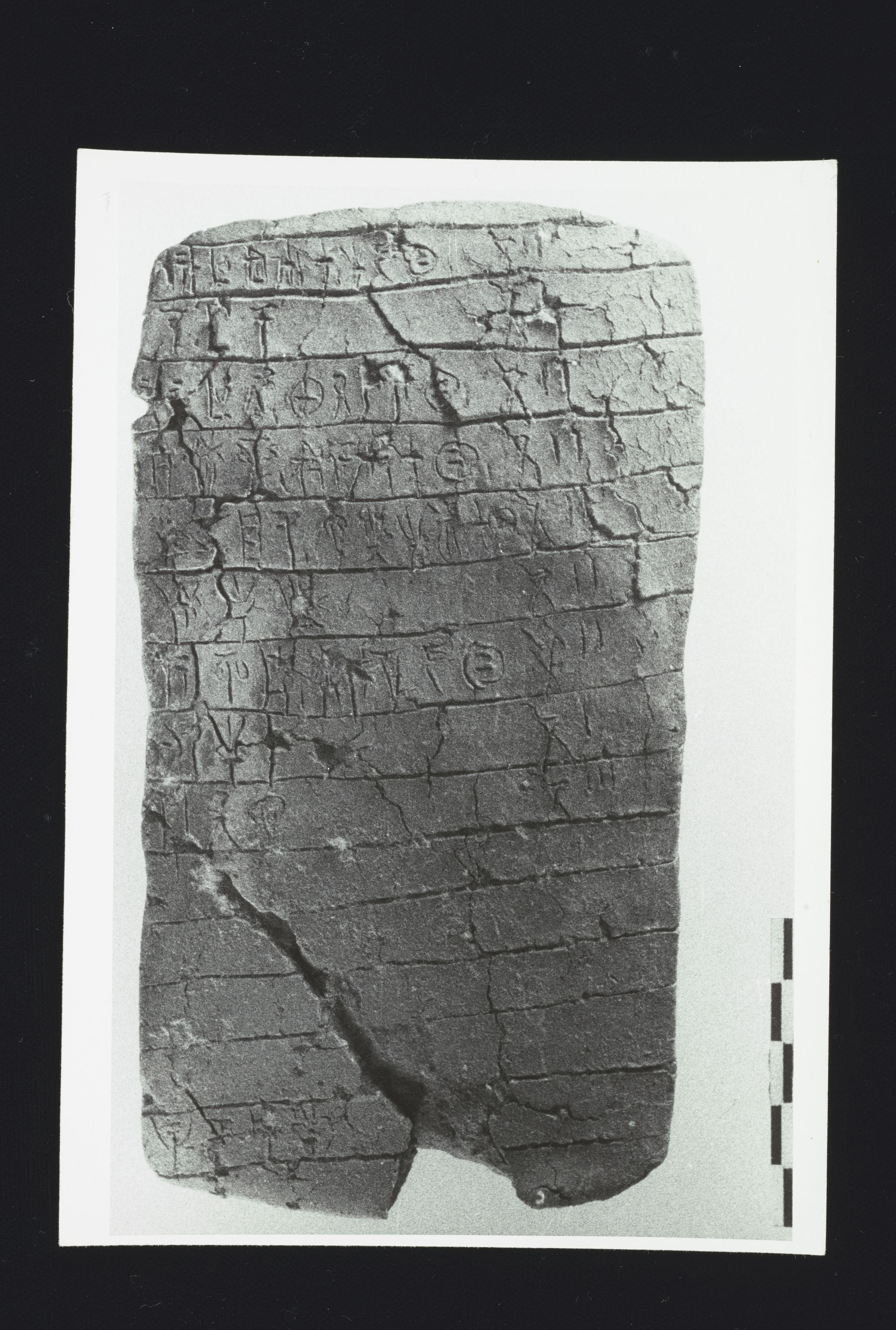
Clay tablet with Linear B script, House of the Oil Merchant Room 2, Mycenae, (MY Au 102), ©British School at Athens
Clay tablet with Linear B script, House of the Oil Merchant Room 2, Mycenae, (MY Au 102), ©British School at Athens
This is the first time such a collection has been made digitally available to researchers and the public in the hope it inspires new discussions and advance knowledge of this key site in the history of early Greece and the Mediterranean.
Unifying the online collections held both in Cambridge and at the BSA, amounts to over 5,000 pages of 80 excavation notebooks as well as more than 1,700 photographs and over 600 drawings and plans of Mycenae’s remains, within and outside the citadel walls, and of small finds from Wace’s excavations. Unlike printed publications, the digitisation of this raw archival material allows the viewer to connect with the original, unedited physical documents and could help researchers consider new avenues of research at Mycenae.
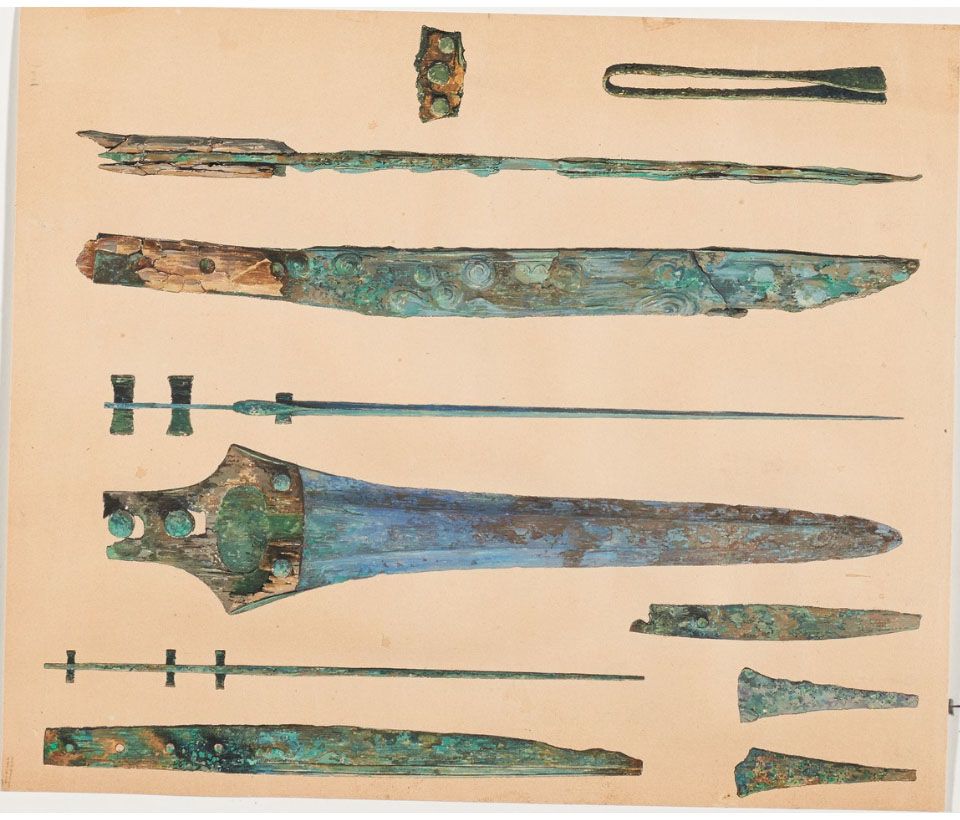
Drawing of Bronze dagger and knives, with wooden and ivory handles and bronze tweezers, from Tombs 518 and 529. ©British School at Athens
Drawing of Bronze dagger and knives, with wooden and ivory handles and bronze tweezers, from Tombs 518 and 529. ©British School at Athens
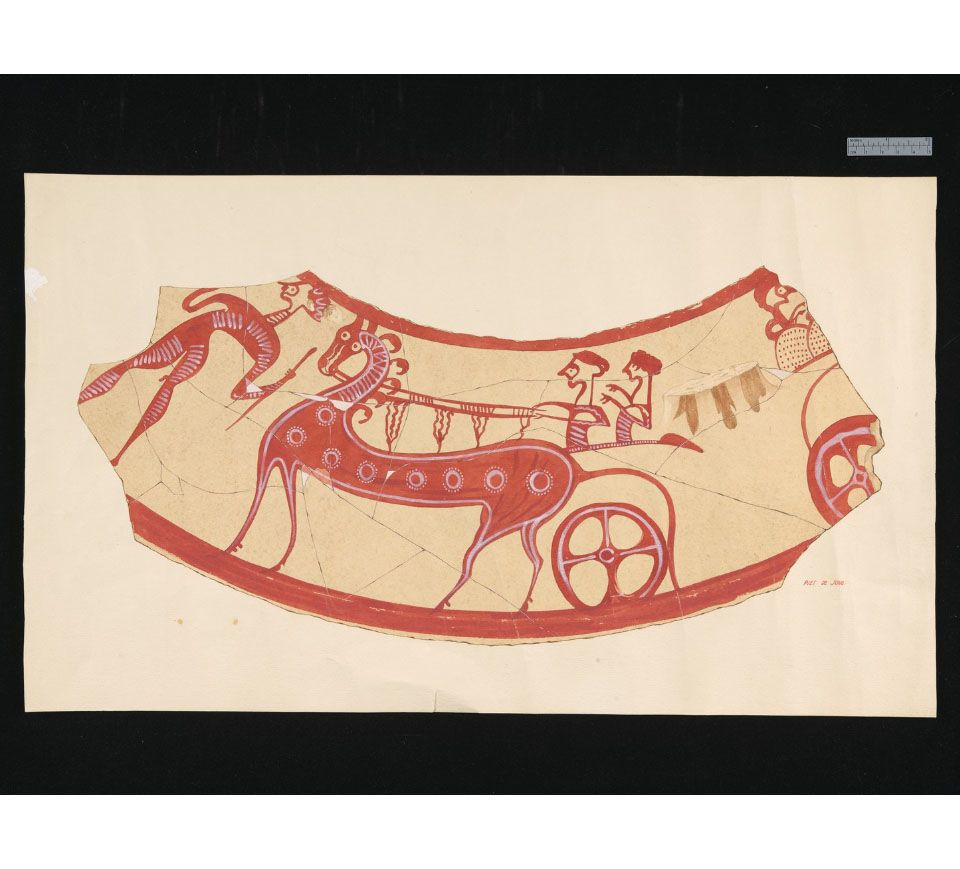
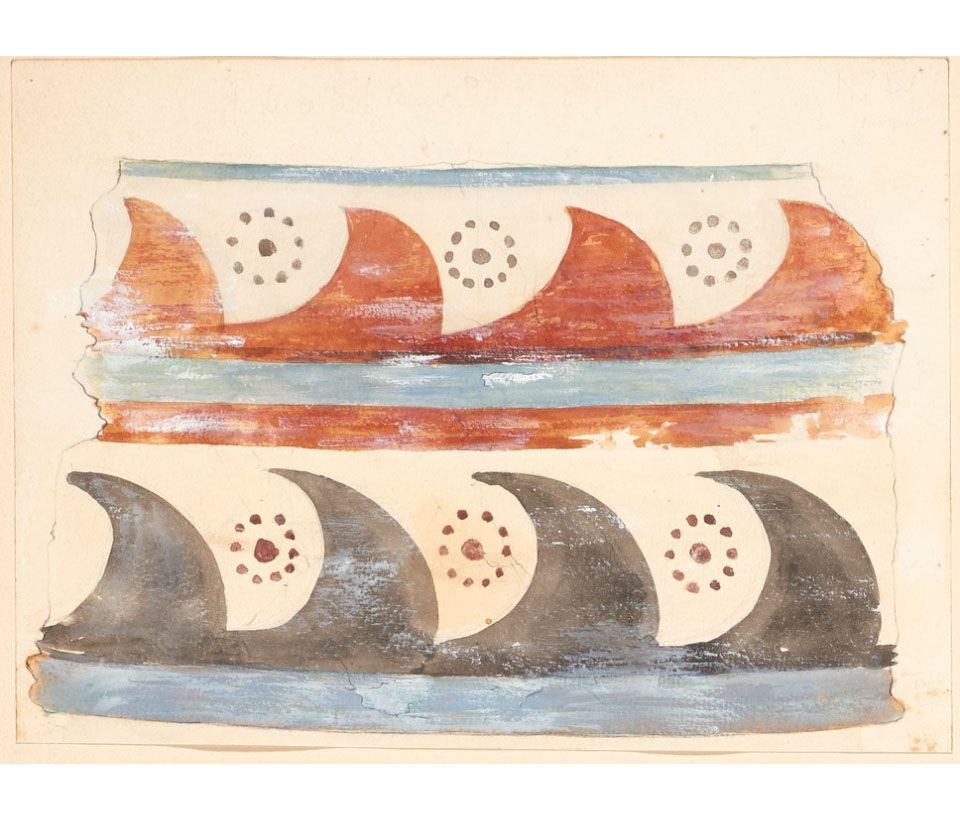
“One of the benefits of digitisation is the breaking down of barriers which exist in physical collections, whether of location or subject. We look forward to seeing how this exciting collection lives in the digital realm, as new connections and new avenues of enquiry emerge.”
Huw Jones, Head of Digital Library Unit, Cambridge University Library
“Archaeological interpretation begins at the trowel’s edge – the diaries, drawings and photographs digitised here transport us as close as possible to that edge: the actions and thoughts of Alan Wace and his pioneering team while in the field. With their excavations, they added important new knowledge to the history of one of the world’s most famous sites. We hope that by digitising and making their records accessible worldwide, their work will continue to inspire, spark debates and generate questions, leading to new ways of thinking and a better understanding of life at this remarkable ancient site."
Dr Yannis Galanakis, Faculty of Classics, University of Cambridge
Archaeology by its very nature is a destructive art, making the recording of excavations particularly important. This collection allows us to begin to picture what Mycenae could have been like before the excavations began, something which is now impossible to see. The collection offers the chance to walk in the footsteps of Wace and his team and witness history in the making, shedding light on to archaeologists’ evolving thought processes as they excavate and record their findings and how these findings can help us interpret and understand the past.
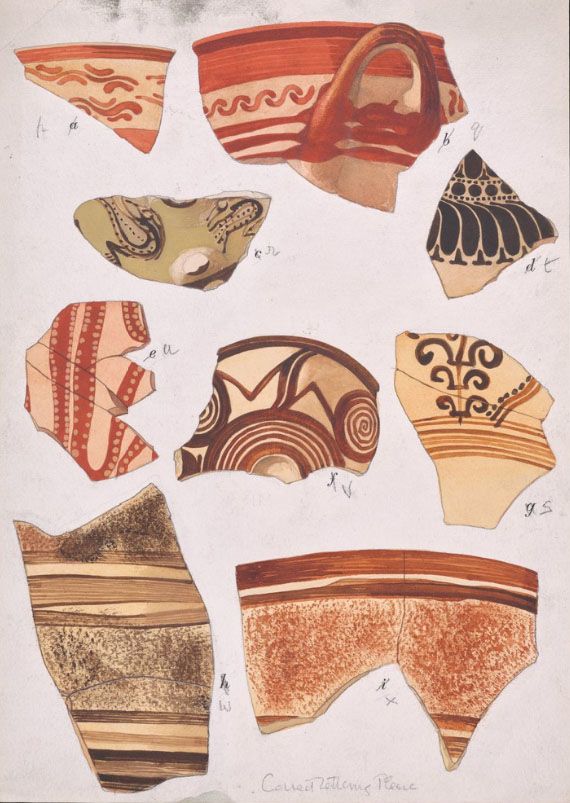
Drawing of 9 pottery sherds from Grave Circle A area, Little Ramp and Ramp House ©British School at Athens
Drawing of 9 pottery sherds from Grave Circle A area, Little Ramp and Ramp House ©British School at Athens
The digital archive is free to explore on the Cambridge Digital Library.
More information on the Mycenae collections at the British School at Athens can be found here: https://digital.bsa.ac.uk/index.php
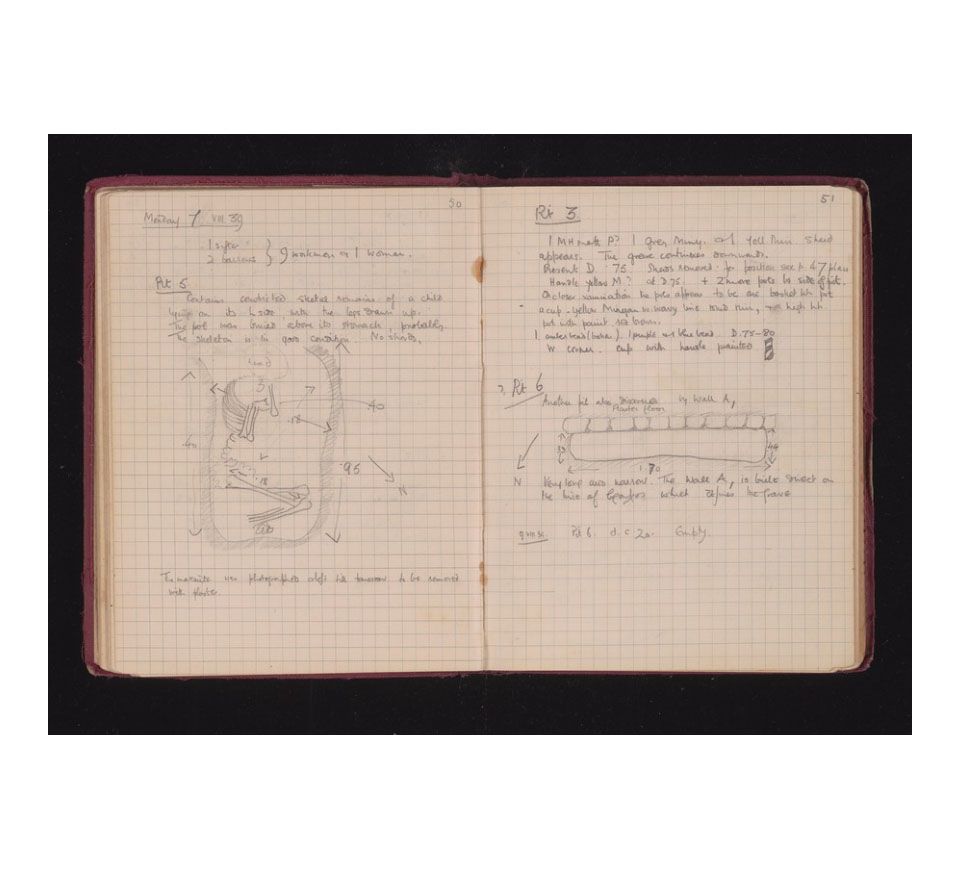
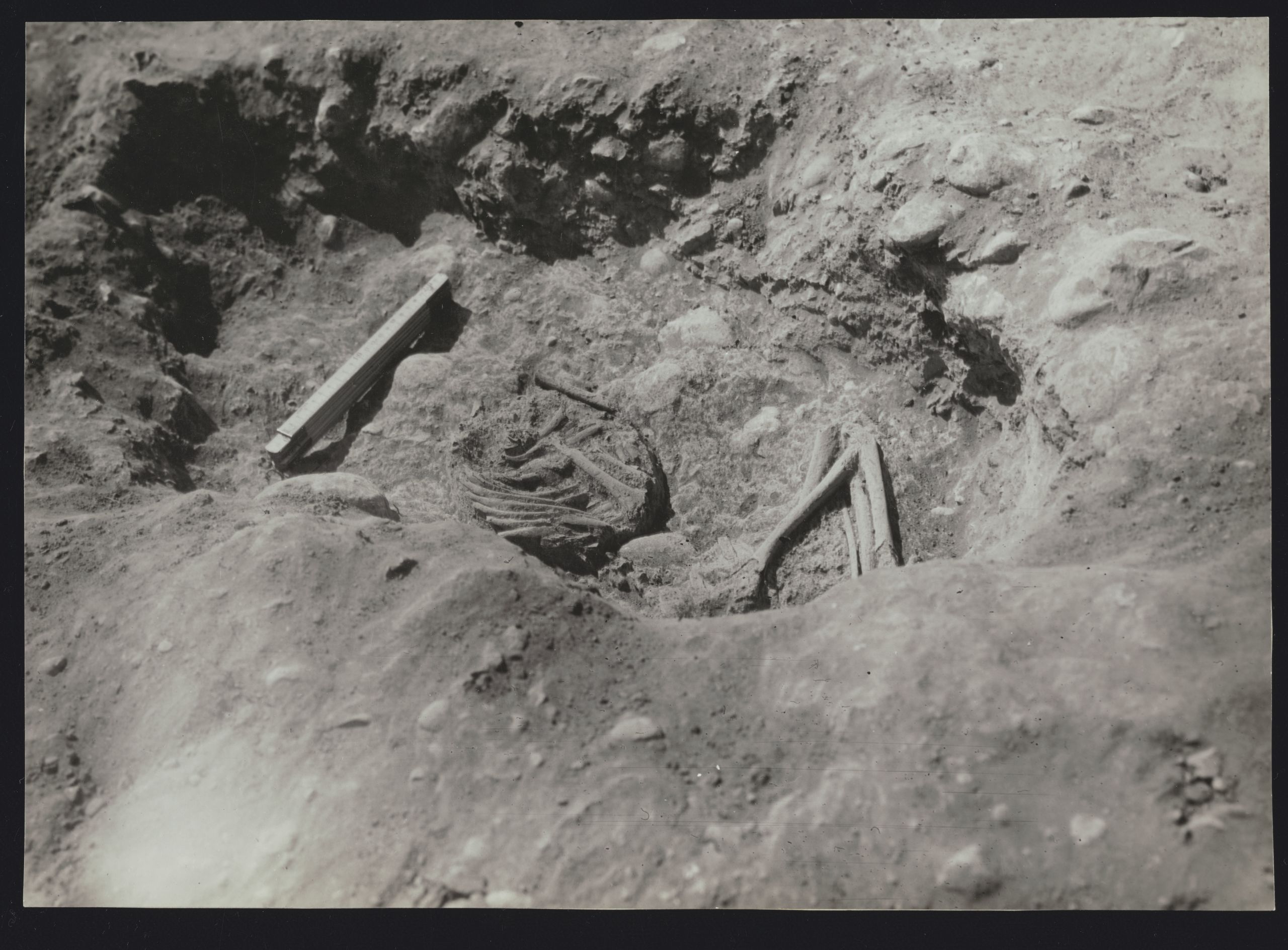
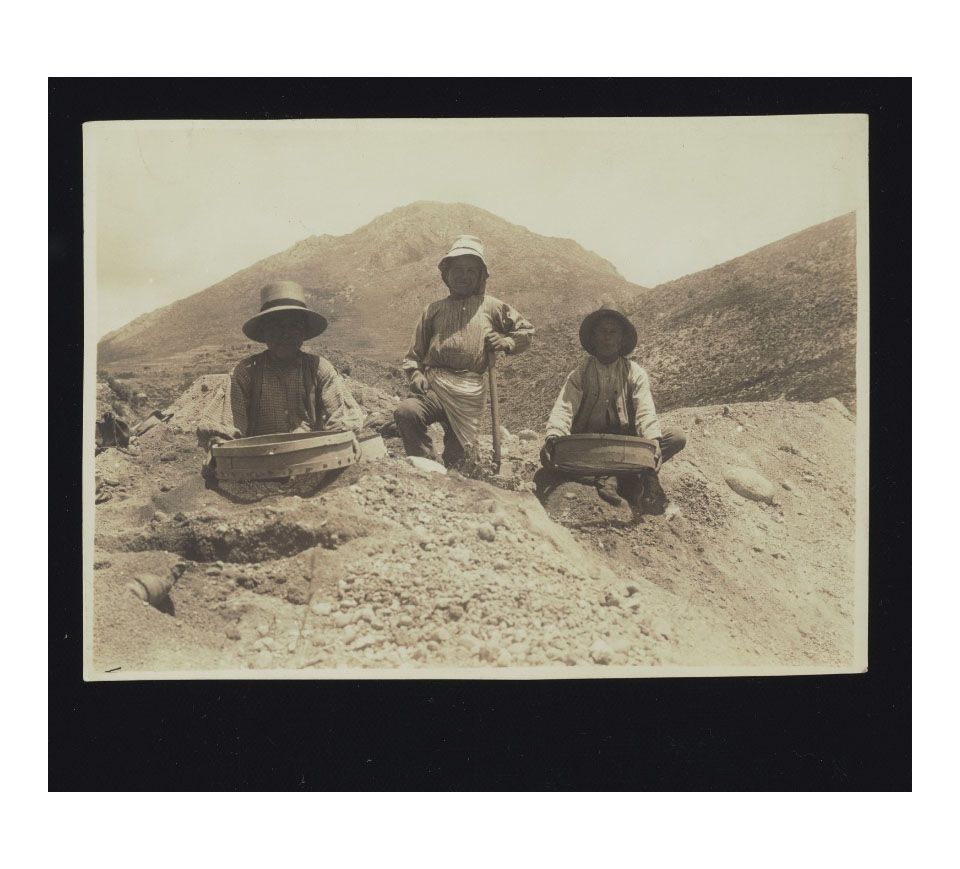
Credits: We are grateful to the Gladys Krieble Delmas Foundation, the Faculty of Classics (University of Cambridge), Ms Linda Witherill and Dr Elizabeth French for assisting financially with the digitisation of the Mycenae Excavation and Publication Archive to coincide with the Centenary of the commencement of Alan Wace’s work at the site. We would also like to thank the British School at Athens, Mr Robert McCabe and the Benaki Museum/Photographic Archives-Nikolaos Tombazis Collection (FA.10) for providing material and copyright permissions.
